#columbia academics
Text
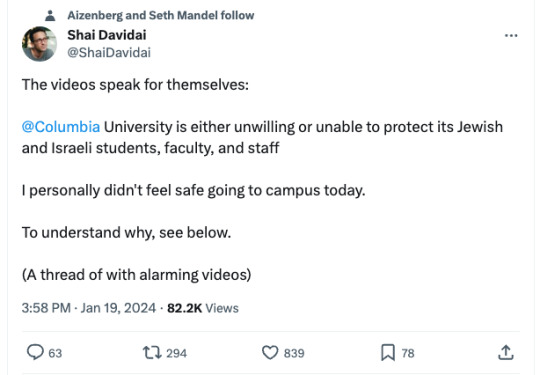

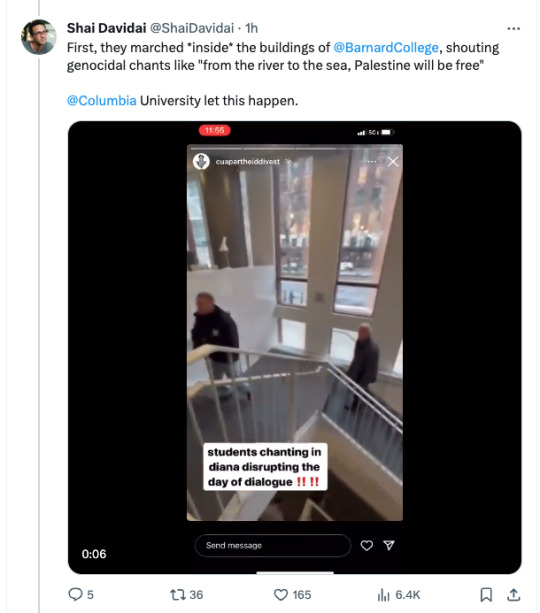
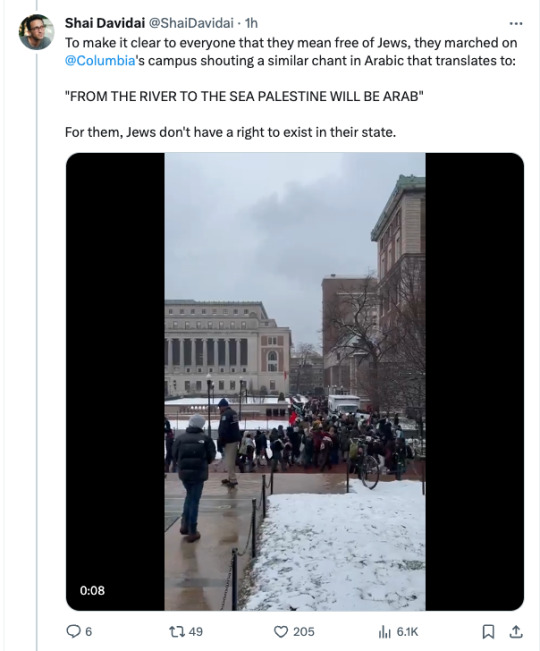






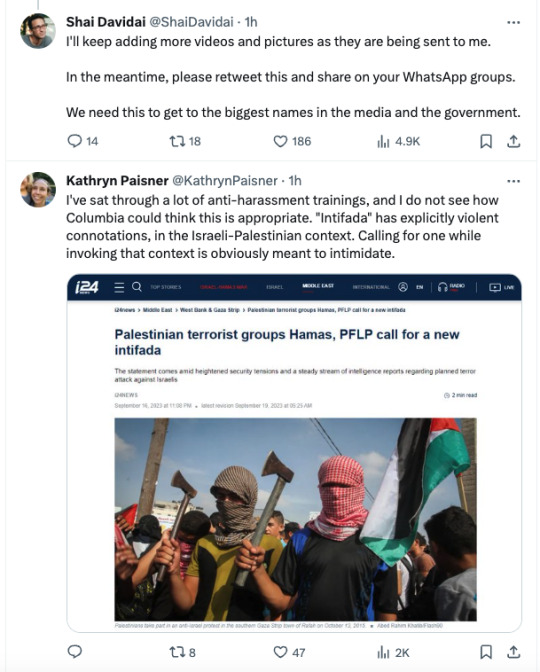
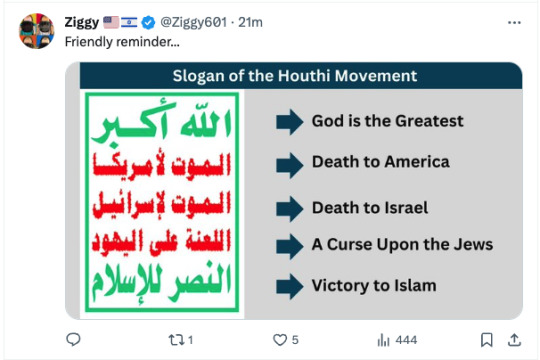
Source
340 notes
·
View notes
Text

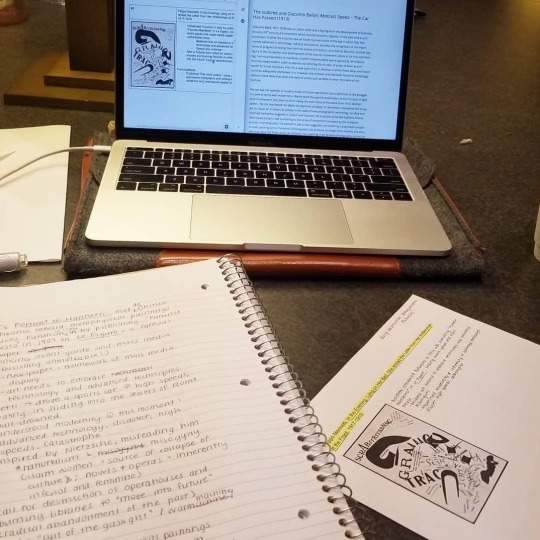



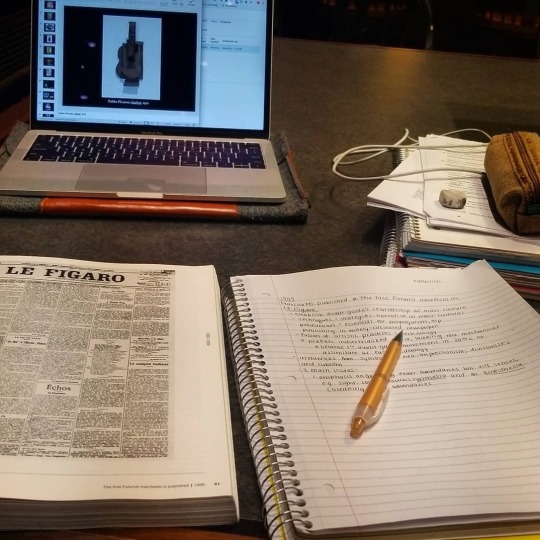

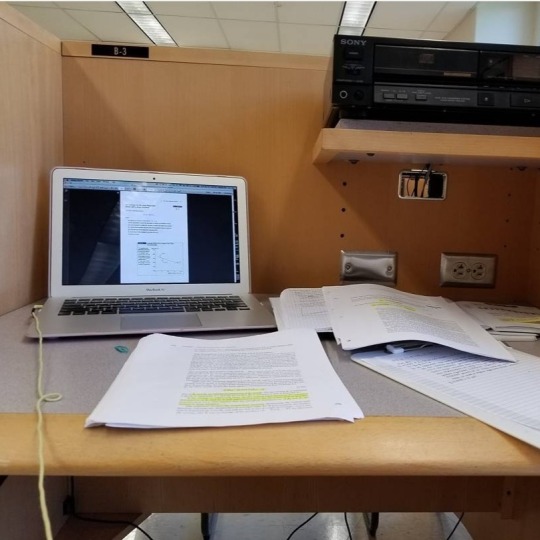
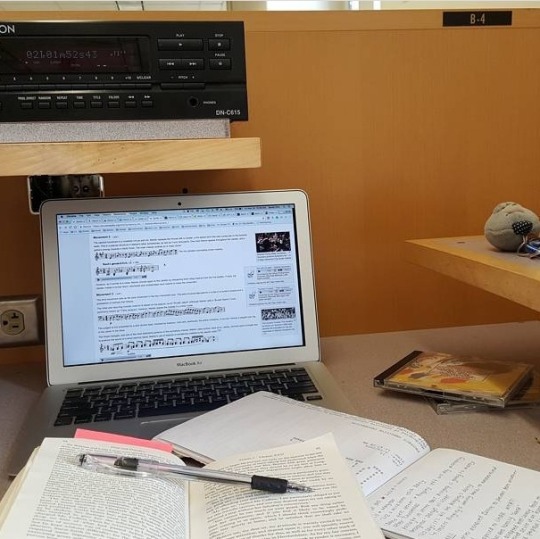
i was always chaotic academic in college, with my all-nighters, messy desk, and wired earbuds
#basically this is a throwback photoset#peep nyu's bobst being the first pic bc their library has a better view hehe#back when macbooks had headphone jacks :((#studyblr#study inspiration#tea-tuesday#mine#study#studyspo#study motivation#library#academia#columbia university#columbia#chaotic academia#chaotic academic aesthetic#new york city#student#college#uni#university#photoset
173 notes
·
View notes
Text




By: Lee Yaron
Published: Jun 16, 2024
Antisemitic comments by professors, harassment of Jewish students – Columbia University's antisemitism task force has heard hundreds of testimonies since its formation in November. Its members tell Haaretz about the mandatory orientation they plan and say they have agreed on an 'educational' definition of antisemitism
NEW YORK – One professor encountering a Jewish-sounding surname while reading names before an exam asked the student to explain their views on the Israeli government's actions in Gaza. Another told their class to avoid reading mainstream media, declaring that "it is owned by Jews." A third revealed a student's complaint about an offensive comment regarding Jews by publicly displaying their email to fellow students.
Several times, professors encouraged students to participate in pro-Palestinian protests or the Gaza Solidarity Encampment for extra credit, or conducted classes at protest sites. Other incidents included students wearing Jewish symbols having them torn from their person. Some were pushed out of student clubs they had been part of because they did not want to participate in group actions and statements against Israel's right to exist.
These are just a few of the hundreds of testimonies the Columbia Task Force on Antisemitism has documented that detail harassment, intimidation, discrimination and exclusion against Jewish students by professors and fellow students at the New York university since the October 7 Hamas massacre and subsequent war in Gaza.
The task force conducted over 20 listening sessions across the university, which found itself at the epicenter of the campus protests that have engulfed America this year, hearing from about 500 students and receiving dozens of written appeals.
Some of these testimonies are set to be published in the coming weeks in a new report focusing on Jewish students' experiences at Columbia.
The task force was formed last November by Columbia University President Minouche Shafik, Barnard College President Laura Ann Rosenbury and Teachers College President Thomas R. Bailey. The aim was to address the "harmful impact of rising antisemitism on Columbia's Jewish community and to ensure that protection, respect, and belonging extends to everyone."
From its inception, the task force faced accusations of being illegitimate from some pro-Palestinian faculty and students. Critics claimed its existence was politically motivated, designed to spread fear by exaggerating antisemitism and perceived dangers to Jews, suppress criticism, and distract from the plight of Palestinians in Gaza and the violent arrests of pro-Palestinian protesters.
Jewish students active in the pro-Palestinian protests and Gaza Solidarity Encampment also criticized the move, saying the task force misrepresented Jewish students who did not feel endangered on campus.
Haaretz has interviewed several members of the task force, who say they have documented hundreds of cases of Jewish students feeling discriminated against. This month, the task force has commissioned a large survey of the entire Columbia student population in order to collect data about different aspects of antisemitism on campus.
The members also discussed Columbia's planned response, including a new antisemitism orientation – mandatory for all new students and faculty – to educate on what Jewish students might find offensive. It will also provide for the first time an educational, not legal, definition of antisemitism.
The new definition is expected to determine that statements calling for the destruction and death of Israel and Zionism can be considered antisemitic, while criticism of the Israeli government cannot.
A real problem
"I'm a social scientist, and I believe exploratory research is important. Therefore, in order to make recommendations for changes on campus, we needed to truly understand student experiences first," says task force co-chair Prof. Ester R. Fuchs, who teaches at Columbia University's School of International and Public Affairs.
"We heard from students who feel their identity, values and very existence on campus have been under attack," adds Fuchs, who has been a public affairs and political science professor at Columbia for 40 years. "My heart was broken listening to these students and what they were being forced to deal with."
Another co-chair, Prof. David M. Schizer, from Columbia Law School, notes: "Only when we talked to the students did we realize how serious the problem is. Unfortunately, there are still many faculty members who do not believe that there is antisemitism on campus, and some claim that antisemitism is being weaponized to protect pro-Israel views. We can put it this way: have there been antisemitic incidents? Yes, absolutely. Are there antisemitic faculty and students? Yes, there are some. Are all of them antisemitic? Absolutely not."
The third co-chair, Prof. Nicholas Lemann, from Columbia Journalism School, highlights the fact that the task force didn't have the authority to investigate specific cases. Instead, it was intended to identify wide patterns and solutions.
"In terms of what we've heard, Jewish and Israeli students are feeling very targeted and ostracized," he says. "The concept of Zionism has become unacceptable in some circles at Columbia. People are asked to promise that they're not Zionist. In the classroom, some feel uncomfortable because of intense criticism of Zionism."
Prof. Gil Zussman, an Israeli electrical engineering professor and member of the task force, is especially concerned by faculty members "who have been creating a discriminatory environment – by, for example, moving their classes and office hours into the encampment where 'Zionists were not welcome.'
"Based on conversations with students, we now know that some faculty members are unfortunately also creating a hostile environment toward Israelis in classrooms and are encouraging rule-breaking by student protesters," Zussman says. "For example, over 10 faculty and staff were standing outside Hamilton Hall when students broke in [on April 29 as part of the pro-Palestinian protest]. If I were a parent of one of these students, I would have major concerns about these faculty."
Schizer, who has worked at Columbia for over 25 years, says he is concerned about the inability of opposing groups on campus to have discussions with each other. "There used to be healthy discussion, including debates about Israeli government policy and the occupation," he says. "However, since October 7 the conversation has changed, with many asserting that Israel itself is illegitimate, and with students who disagree refusing to speak and study with one another.
"Part of what a great university does is introduce us to people with different opinions," he continues. "For a democratic society to flourish, we need shifting coalitions, not warring camps. People can agree about X and disagree on Y. The situation now on campus is not healthy. We're really missing something because we see the world as divided into two opposing camps that have nothing to do with each other."
One of the key points emphasized by task force members is that, unlike past protests at Columbia, which were directed at the establishment and the university itself, this protest has in many ways been aimed at students who lack the tools to cope with the intensity of the anger directed against them.
Student protesters targeting other students "are causing pain and isolation in a way I have never seen before on campus," Schizer says.
Fuchs adds that one of the task force's observations is that "the burden of dealing with these situations of harassment, intimidation, discrimination and exclusion has primarily been on the students. We can't allow it."
Several task force members highlight what they see as the university's double standards in ignoring discrimination against and exclusion of Jewish students.
Zussman elaborates. "If, for example, a student group were to use an abhorrent chant such as 'We don't want BLM supporters here,' there would be immediate consequences. However, chants such as 'We don't want Zionists here' have been normalized and currently have no consequences. These double standards are unacceptable and will eventually fracture the university."
Fuchs concurs, noting that the "standard at the university has always been to listen to those experiencing discrimination or hate. During the Black Lives Matter movement, we recognized the need to understand how certain words and behaviors affected individuals. Now, we need to be consistent and apply the same standard to Jewish students."
Burning questions
Both pro-Palestinian and pro-Israeli groups have demanded that the task force provide a legal definition of antisemitism to address the burning questions: Is anti-Zionism a form of antisemitism? Is challenging the right of the State of Israel to exist antisemitic? Is criticizing the Israeli government antisemitic, as some Israelis believe?
However, the task force members told Haaretz that providing a specific definition in the university's rules would contradict federal law – specifically Title VI of the Civil Rights Act of 1964, which requires that policy definitions of discriminatory harassment be general and not treat separate groups differently. Title VI stipulates that no person in the United States shall, on the grounds of race, color or national origin, be excluded from participation in, denied the benefits of, or subjected to discrimination under any program or activity receiving federal financial assistance.
"In theory, we could specify what terms like 'discriminatory harassment' and 'hostile learning environment' mean when applied to Jews. But doing so would violate the law," says Schizer, who adds: "We don't need a dedicated definition for Jews."
A second reason the task force did not define antisemitism straight away was their belief that the university's definition should emerge from the experiences of the people themselves.
"If we were to define antisemitism for the students in advance, then we are narrowing the possibilities and precluding their experiences," says Fuchs. "In fact, other task forces at Columbia – such as those focused on gender and race following the George Floyd [murder in 2020] – did not start with a definition."
But after hearing from hundreds of students, the task force has decided to establish and publish a definition of antisemitism based on the students' experiences – an educational one, that is, not a legal one. This definition is designed to inform faculty and students about what can offend Jewish people and which types of statements can cause pain and discomfort.
An educational definition will not infringe upon freedom of speech on campus or prohibit potentially antisemitic phrases. It will simply inform community members of the harm their words might cause. This approach is not the decisive action some Jewish groups on campus were seeking.
"We are not trying to draw a very thick boundary around what is antisemitic and say everything outside that boundary is fine," Lemann explains. "However, certain kinds of statements can make a lot of Jewish and Israeli students at Columbia feel intensely uncomfortable. This does not necessarily mean that you will be forbidden to say those things – but you should understand how they are received."
The task force members confirmed to Haaretz that their definition of antisemitism will likely include chants calling for the annihilation of the Jewish state as being offensive to many Jews on campus. Chants criticizing the Israeli government will not be considered antisemitism in any way.
Antisemitism knowledge gap
One of the key innovations the team is working on is a new antisemitism orientation and training program, which will be mandatory for all new students and faculty.
"Columbia is a highly international community, and we recognized a significant gap in people's understanding of what can constitute an offensive statement for Jewish and Israeli students," Fuchs relays. "The training and orientation are designed to provide everyone beginning their time at the university with initial knowledge of what is acceptable and unacceptable in our community – similar to programs on sexual harassment and other issues. We aim for consistency: a consistent set of rules that are consistently enforced, ensuring everyone feels they are being treated fairly within the system."
Since the protests began, the university has initiated disciplinary proceedings against numerous students who allegedly broke Columbia's rules. This included suspending students and initiating other disciplinary actions, including putting them on disciplinary probation, restricting attendance at future events, and being required to attend educational meetings about their behavior and conduct.
Until this April, the initiated actions were published transparently on the Columbia website, but these have been deleted in recent weeks. The university also brought outside law enforcement onto campus to empty the pro-Palestinian encampment. More than 100 students were arrested, which resulted in harsh criticism of the university and widespread pro-Palestinian protests on campuses across the United States and Europe.
The first release to emerge from the task force was a report on protests, demonstrations and free speech, published in March. The next report will include a series of recommendations expected to go into effect before the next semester begins in September.
The task force has also highlighted the urgent need for better management of antisemitism complaints. The task force uncovered deficiencies in the complaint-processing systems across the university's various schools, with some complaints lost in bureaucratic procedures without any response. Many students are unaware of the appropriate channels for reporting issues, while many staff members are unsure how to handle such complaints. Additionally, there is a lack of transparency in the complaint-handling process and its outcomes.
"Different complaints go to different offices and you almost need a law degree just to understand the process," according to Schizer. "It's not enough to have good rules on paper: they must be enforced. Jewish and Israeli students currently experience unequal treatment, and I don't want them to get different treatment – and the law entitles them to the same protection as other groups. The key issue for the coming year is whether Columbia will enforce its rules equally."
In response to this story, a Columbia University spokesperson said: "We are committed to combating antisemitism and taking sustained, concrete action to ensure Columbia is a campus where Jewish students and everyone in our community feels safe, valued and able to thrive."
[ Via: https://archive.is/Yypaw ]
==
These are the antics of religious zealots rather than professional academics.
#Lee Yaron#Columbia University#antisemitism#israel#palestine#pro palestine#palestine protest#campus protests#student protests#academic corruption#unethical#higher education#religion is a mental illness
26 notes
·
View notes
Text
NEW YORK — Columbia University has agreed to take additional steps to make its students feel secure on campus under a settlement reached Tuesday with a Jewish student who had sought a court order requiring the Ivy League school provide safe access to the campus amid protests against Israel over its war in Gaza with Hamas.
The law firm representing the plaintiff in the lawsuit, filed as a class action complaint, called the settlement a “first-of-its-kind agreement to protect Jewish students from extreme on-campus Gaza war protestors.”
Under the agreement, Columbia must create a new point of contact — a Safe Passage Liaison — for students worried for their safety. The liaison will handle student safety concerns and coordinate any student requests for escorts through an existing escort program, which must remain available 24/7 through at least December 31, according to the agreement.
The settlement also makes academic accommodations for students who couldn’t access campus to complete assignments or exams, among other provisions. The Jewish plaintiff, known by the initials CS, said Columbia’s decision to let students take classes online in response to the protests showed that the school had become too dangerous for Jewish students to receive the education they were promised.
“We are pleased we’ve been able to come to a resolution and remain committed to our number one priority: the safety of our campus so that all of our students can successfully pursue their education and meet their academic goals,” a university spokesperson said in a written statement.
21 notes
·
View notes
Text
youtube
What This Jewish Professor At Columbia Wants You To Know
For over seven months, a dominant conversation in the U.S. news media has been about alleged and increased antisemitism on American campuses - culminating in the coverage around student encampments. The “Gaza solidarity encampment” at Columbia University, in particular, has received a lot of attention which sparked encampments across the country -- as well as university-backed police repression and violence. In this interview, AJ+ speaks to Dr. Bruce Robbins, a Jewish professor at Columbia University who supported students protesting Columbia University’s investments in companies and programs that uphold Israeli apartheid and the genocide in Gaza.
#palestine#free palestine#gaza#save palestine#save gaza#free gaza#israel#israel palestine conflict#israeli apartheid#bds boycott#boycott israel#academic boycott#columbia university#columbia protest#war on gaza#gaza strip#gaza genocide#gazaunderattack#palestinian genocide#genocide#stop the genocide#gaza solidarity encampment#jewish antizionism#Youtube
25 notes
·
View notes
Text


From @blackwomenradicals
#our world#academic imperialism#this lovecraft country of ours#ecosystem of white supremacy#politics#our history is your history#activate your activism#afrofeminism#black feminists taught me#columbia university
19 notes
·
View notes
Text



#dark acadamia aesthetic#dark academic#study aesthetic#studyblr#journal#history#journaling#nuriinnyc#classical art#columbia university#ivy league
20 notes
·
View notes
Text
One Hundred Years of Solitude by Gabriel Garcìa Màrquez has some magic in it. (Apart from the magic realism part)
Many people find it hard to read. But when you want something you do it, and specifically in this book, as you start reading it with interest you get to see how properly structured the book is.
Well yes indeed, the author does not sugar-coat or romanticise anything. (Everything is blunt,not like encanto) He presents the lives of the people in Macondo and of the Colonel and that's the beauty of the book. I have read the English version of the book and well, it actually is poetic in many aspects.
And the character, Colonel Aureliano Buendia....Gosh....The arc is just so big. He grows up as a quiet little boy who never leaves his house, very timid unlike his brother Arcadio Buendia who was built and looked as if he was birthed for war. He used to be the perfect example of a geek. He never left the lab. Dude made golden fishes. And then he marries a very young girl and she dies. Heartbreak. And boom. Man suddenly got ideas to go to the war against the conservatives with the liberals. He gets promoted. Becomes Colonel. Literally led the revolt at a point. With great power comes great responsibility and our brother took that lightly. He had the audacity to kill anybody who goes against him. At a point he wonders where his heart actually is and then he Attempts suicide. He then realizes "oh I used to make golden fishes" and he got back to it. And well......the number of children he had from different women happens to be 17.
There's a lot more i can say, I've just given bits and pieces about a single character...and y'all whine about how boring this book is? Seriously?
How? Like how?
#one hundred years of solitude#gabriel garcia marquez#magic realism#classic academia#grey academia#chaotic academic aesthetic#bookworm#dark academia blog#psychology#quote#simone de beauvoir#charles bukowski#latina#latin america#british columbia#nobel prize#ancient civilizations#macondo#encanto#buen dia#garcia marquez#aureliano#dark academia literature#classic books#classic literature#classic
13 notes
·
View notes
Text
A Columbia University Motivation Playlist
My dream school. Go Lions!
Human Nature - Michael Jackson
New York Groove - Ace Frehley
You're on Your Own, Kid and Welcome to New York - Taylor Swift
Campus - Vampire Weekend
Carnival - Natalie Merchant
#columbia university#uni blogging#student life#university#uni life#uni student#college#studying#study motivation#academics#dream#dreaming#new york#new york city#nyc#manhattan#harlem#nyclife#nyc girl#bronx#middle school#school#student#high school#teacher#school life#grad school#goals#hopes#hope
2 notes
·
View notes
Text
Pro-Palestine Students Face Alleged Chemical Attack At Columbia University
youtube
#palestine#gaza#repression#college#academic freedom#israeli apartheid#anti semitism#Islamophobia#columbia university#Youtube
4 notes
·
View notes
Text
"Spiritualism was not popular in all BC towns, but when Emily Carr attended her seance, it had won a significant following in Victoria. Spiritualist associations were founded in Victoria and Nanaimo during the late 1880s, and they remained vibrant well into the twentieth century. Victoria gained an ordained spiritualist minister in 1915 and Nanaimo in 1926. In 1901, forty-three Victorians defined themselves as spiritualists, and many more attended their meetings. In the Nanaimo area, with its smaller population, eighty people told the census-taker that they were spiritualists. ...Nanaimoites typically opted for some level of fuzzy fidelity, with nominal adherence to mainstream Christian denominations. Nonetheless, the eighty spiritualists outnumbered the irreligious in Nanaimo by about two to one, as only forty-four residents defined themselves as atheists or of “no religion” in 1901. This ratio is atypical, as the irreligious in other BC towns significantly outnumbered the adherents of metaphysical religions in both 1901 and 1911.
Many Nanaimo spiritualists were miners or members of a mining family. Of the twenty-six spiritualist Nanaimo men who listed occupations on the census, twenty, or 77 percent, were miners. Perhaps the high number of fatal accidents in the mines led at least some colliers and their wives to spiritualism, which offered the hope of reconnecting with a loved one. An address of appreciation from George Campbell, chair of the Nanaimo Spiritualist Association, to visiting medium George P. Colby stressed the importance of this. Campbell thanked Colby for his work in the community as “Test Medium and Inspirational Lecturer,” noting that the association felt
grateful for the privilege we have had of communing with those of our loved ones who have joined the greatest throng of immortals in the summerland beyond – for the words of sympathy that have comforted bruised hearts bringing to them a realization of the presence of their supposed dead and a knowledge of the measureless possibilities of life.
Although spiritualism was popular among many people who sought connection with lost loved ones, it was far from popular with certain segments of BC society. Protestant church leaders attacked it as occultism and rank heresy. Such criticism was not new at the turn of the century. In 1870, Edward Cridge, dean of Victoria’s Christ Church Cathedral and soon to become the first bishop of the Carr family’s Reformed Episcopal Church, published a sermon titled “Spiritualism:” or Modern Necromancy, in which he denounced spiritualism as “divining or soothsaying by means of the dead.” He warned readers that it was
a very ancient wickedness. Its various forms are enumerated and condemned in the Book of Deuteronomy ... The Christian who meddles with spiritualism stands on the verge of an abyss.
Cridge clearly knew that at least some of his flock had experimented with spiritualism because he acknowledged that curiosity or a desire to commune with departed loved ones could tempt people to try it. However, he proclaimed firmly that
this practice is denounced in Holy Scripture under the severest penalties ... That which is hateful to God, and punishable by his law with death, cannot be a thing for a Christian to touch, but to shun with abhorrence.
Other Protestant ministers were also strongly opposed to spiritualism, and the Catholic Church declared that spiritualists were trafficking with demons and evil spirits.
Both church leaders and people of a more secular and scientific bent enjoyed unmasking visiting mediums as frauds. For example, in July 1900, a lengthy Vancouver Province article titled “Some Shady Shades” attacked a recent visiting medium as a charlatan and provided a more detailed critique of a “Professor Raymond” – a dubious traveller “in the path of easy money” – who was then in town. It described a Raymond seance, complete with several female “victims” of the deception and typical spiritualist manifestations, such as rapping and the playing of musical instruments by unseen hands in the dark. The reporter clearly believed that Raymond himself was the source of all these phenomena, and he commented snidely that
the guitar banging shade was careless, for not only did it drop the guitar, but it most reprehensibly jabbed an elbow into the eye of the little girl.
For their part, spiritualists recognized that some mediums were frauds, but they strongly defended the authenticity of most mediums and of spiritualism as a legitimate religious alternative. In late-nineteenth-century Ontario, the criminal courts did not always agree. In 1899, some Toronto mediums were charged under the witchcraft section of the Vagrancy Act for telling fortunes or conjuring spirits. The BC courts seemed less concerned with this issue, and at least some BC authorities were willing to grant legitimacy to spiritualist organizations. For example, spiritualists petitioned Nanaimo City Council in 1897, protesting a bylaw that forced local mediums and seers to pay a fifty-dollar licence fee every six months, lumping them in with fortune tellers and other occultists. They insisted that spiritualism be treated like any other church, and council complied with their wishes. The words “medium” and “seer” were removed from the bylaw, though fortune tellers still had to pay the fee. The fact that a year afterward, a leading Nanaimo spiritualist was elected mayor reinforces the acceptability of this alternative movement in the community.
Whereas orthodox Christian ministers condemned spiritualist beliefs, some spiritualists claimed that their movement could bolster Christian faith, as it proved the existence of life after death and therefore negated the arguments of atheists and other “infidels.” For example, George Colby, who gave a talk in Nanaimo titled “What Good Has Spiritualism Done,” argued that
with the advance of material science, the people became more materialistic in their opinions and boldly denied the immortality of the soul. What theology failed to prove, Spiritualism, with its phenomena practically and in a scientific manner demonstrated the truth that we continue to live after the dissolution of the body.
As Timothy Noddings notes, mainstream Christians, unbelievers, and adherents of metaphysical religions all employed the rhetorical weapons of science, rationality, and modernity in their debates with each other, with each side labelling the other as irrational and unscientific.
Although these groups often painted themselves as antithetical to the others, scholars have demonstrated that like Emily Carr, many spiritualists in the United States and Central Canada, particularly many middle-class spiritualists, saw nothing incompatible with practising spiritualism, especially in the privacy of their homes, while remaining members of Protestant churches. Some clergy dabbled in spiritualism themselves, but the Canadian Protestant churches had limited tolerance for such behaviour, as Stan McMullin reveals in chronicling the expulsion of Reverend B.F. Austin from the Methodist ministry for heresy in 1899. Robert Lowery, the infidel newspaperman of the Kootenays, certainly felt that Christianity and spiritualism had much in common, none of it good. As he explained in an article:
You are not expected to examine the Bible; neither are you permitted to investigate the seance. How like as two peas are twin sisters of superstition.
...
...prominent spiritualists also spurned the churches, despite the contrary opinions of family members. The death of a former mayor of Victoria, James Fell, revealed the complex relationship that could exist between secularism, spiritualism, and mainstream Christianity. In 1890, the Anglican bishop Hills noted in his diary that Fell had just passed away and had
left directions no other Service should be said over his body but the form used by the Odd Fellows. Poor man he held spiritualist opinions in which he persevered to the last. He used occasionally to come to the Cathedral where he had a pew. His family are much vexed at the directions left.
Fell’s son asked Hills for permission to have his father buried in the Church of England section of the cemetery, despite the lack of an Anglican burial service. Hills agreed, apparently because
Fell had many excellent qualities was benevolent and never minded what trouble he took for the poor and the sick. Under these circumstances I consented to the request and indeed felt it to be a relief that the service of the Church was not required.
...
As several scholars have noted, women were much more attracted to spiritualism than to irreligion. Owen speculates that many who turned to the alternative religions in Britain may have been alienated by the cold scientific rationalism of unbelief, as it left no room for a spiritual dimension. Women may have been drawn to spiritualism because their natures were assumed to be more spiritual than those of men. The gender ideology of the time, which defined women as sensitive and passive, made them especially suited as mediums, and many took on this role. As well, infant mortality rates in the nineteenth century were much higher than they are today. Although both fathers and mothers mourned dead children, and both sought reconnection through spiritualism, this option appears to have appealed chiefly to women, who had generally had close ties to their children. The fact that the census lists so few unmarried spiritualists may indicate that a number of wives brought their husband to spiritualism, as many did to the Christian churches. For example, the 1881 census records Mary Ann Hardy of Nanaimo as a spiritualist, whereas her miner husband, Thomas, is enumerated as a Unitarian. In the 1891 census, both Mary Ann and Thomas defined themselves as spiritualists, as they also did in 1901. A few husbands identified themselves as spiritualists, whereas their wives remained orthodox Christians (at least officially), but these cases were the exception, unlike those involving unbelieving husbands and Christian wives. Some married women differed from their husbands in defining themselves as spiritualists, as was true of well-known Victoria photographer Hannah Maynard. She and her husband were both Anglicans in 1881, but after her youngest daughter died of typhoid in 1883, she began to attend seances, incorporating ghostly figures into some of her photographic work. Her desire to reconnect with lost family members was intensified by the deaths of another daughter and a daughter-in-law within the next ten years. In 1891, the census identified her as a spiritualist, whereas her husband’s religion was “not given.”
...
An 1894 petition to the Legislative Assembly allows us to look more deeply at potential interest in and support for spiritualists on Vancouver Island. The petition, a first effort to eliminate the licence fee for clairvoyants, who were lumped in with astrologers, seers, and fortune tellers under the Municipal Act, was signed by 186 people, 58 from Victoria and the rest from Nanaimo. This is significantly more than the 123 Victorians and Nanaimoites who were listed on the 1901 census as spiritualists (a large minority of whom were children, who do not sign petitions). The petitioners stated that they were “Spiritualists, and profess that form of religious belief commonly known as Spiritualism, and others are their friends.” Many could not be linked to either the 1891 or the 1901 census, but of the Victoria petitioners who could be traced, five were spiritualists and five were infidels or freethinkers, pointing once again to the connection between the two. Ten belonged to mainstream denominations. The latter pattern was even clearer among the Nanaimo petitioners, most of whom identified with orthodox denominations, primarily as Methodists, Anglicans, or Presbyterians. Seven Nanaimo petitioners were listed as spiritualists in the census, one was an atheist, and over thirty were officially Christian (including a Quaker and a Unitarian). Perhaps the Methodist, Anglican, and Presbyterian signatories were simply friends of spiritualists, but it seems much more likely that most would have had at least some level of interest in the alternative religion, perhaps attending an occasional seance or other spiritualist event, and revealing once again that the census omitted many people who had a significant interest in this form of spirituality.
The Sivertz family, which emigrated from Iceland to British Columbia in 1888, is a case in point. Bent Sivertz wrote a detailed account of his parents’ working-class lives in Victoria and Vancouver before the First World War, and his parents, Elinborg and Christian, can also be found on the Victoria census of 1911, which lists them as Lutherans. Bent, however, tells a different and more complex story. Although his mother was raised a Lutheran, she had left the church well before 1911, disenchanted by its hellfire-and-damnation preaching. She spent some years with a Baptist church but had become much more interested in spiritualism by 1910, perhaps influenced by a female friend who had joined the faith. She “gradually over half a dozen years, left off attendance at the Baptist Church in favour of séances.” This did not deter her from praying for her children as they grew up or from attending at least one revival meeting at the Metropolitan Methodist Church. Like many other people, Elinborg created a lived religion that worked for her but did not necessarily correspond to the clear divisions preferred by theologians. Although she had a close relationship with her husband, she did not have his support in her spiritual explorations, as he “preferred not to go to church” and practised what his son termed a “kindly agnosticism.” Whereas the majority of Victoria’s married spiritualists shared their belief in the supernatural with their spouse, the Sivertzes reflect a not uncommon BC pattern of fluidity between alternative and mainstream religions, and a familiar gendered pattern of an agnostic husband and a believing wife. But this configuration was invisible to the census-taker, as either he or the Sivertzes themselves conflated their ethnic and religious identities – in Iceland, where they grew up, the Lutheran Church was the official denomination. Or perhaps, even in the religiously open climate of British Columbia, these working-class immigrants simply felt safer in naming a relatively mainstream denomination than in telling the enumerator that they were an unbeliever and a spiritualist.
The Sivertzes also reflect links between unbelief, alternative religions, and political activism that were not uncommon in British Columbia and Canada more generally. A labour leader, Christian Sivertz was president of the B.C. Federation of Labour by 1912. He was no socialist, though, and he opposed radicalism in the labour revolt of 1919. Unbelief was typically linked to the more radical BC socialists, but Christian demonstrates that it had a broader reach among at least some less radical BC labour leaders. Elinborg was involved in the major suffrage organization in Victoria, the Political Equality League, and in other social reform endeavours. Although BC suffragists tended to be Christians, some were not. Scholars have noted the link between alternative religions, such as spiritualism, and social activism, including the struggle for women’s rights, a connection that certainly applied in Elinborg’s case."
- Lynne Marks, Infidels and the Damn Churches: Irreligion and Religion in Settler British Columbia. Vancouver: University of British Columbia Press, 2017. p. 190-197.
#spiritualism#fuzzy fidelity#christianity in canada#history of irreligion#working class history#british columbia history#history of religion#academic quote#nanaimo#victoria#kootenays#interior british columbia#vancouver island#working class atheism#working class culture#middle class ideology#women in politics#women's suffrage
2 notes
·
View notes
Text
the Columbia University arrests are worse than they seem. They're arresting protesting students for trespassing. It goes without saying students cannot meaningfully "trespass" in the common areas of a university they attend. So Columbia University has suspended all student protestors from their institution, in the process revoking their access to housing, their belongings, and most crucially damaging their academic futures. We are witnessing full scale silencing and removal of anyone of conscience from the next generation of academia.
37K notes
·
View notes
Text
OFFERING SCHOOL ASSIGNMENT ASSISTANCE SERVICES AT A FAIR PRICE!!CALL/ WHATSAPP/SMS @+1 (512) 882-4013
#allcourses#onlineclasses#dissertation #research#essay#math#academicwritingassignments#homeworkhelp#proposal#article#anatomy#history#philosophy#psychology#English#powerpoint#paperdue#history#quiz #casestudy#discussion#algebra#bestassignmenthelp #essaywriter #essaywriting #schoolassignment #collegewriting #universityassignment #assignmentwriting #assignmentsupport

View On WordPress
#allcourses#anatomy#assignments#assignmentwriting#bestassignmenthelp#casestudy#collegewriting#English#essaywriter#essaywriting#homeworkhelp#math#onlineclasses#paperdue#psychology#research#schoolassignment#universityassignment#Academic writing services#academicwritingassignments#Accounting#algebra#Amherst College#article#Brown university#business#Business writing#Calculus#chemistry#Columbia University
0 notes
Link
Throwing of the shackles of colonialism
#Intellectual Intifada#Columbia University#student activism#imperialism#academic institutions#oppression#Gaza genocide#Palestine solidarity
0 notes
Text
grad school acceptance letters proving columbia university is less selective than midwest targets
#I've been rejected from no less than 3 targets#honestly the application process was more intensive#columbia didn't even ask if i'd scab even though they probably wanted to know#getting accepted to columbia on a research proposal focused entirely on student protest and why it's a cool thing to do#literally the same week they send in the cops to arrest 100+ student protesters#gotta be one of the comedic highs of my academic career#academia#target store#grad school
0 notes
Text
they should invent an institution that is good
#sadly that is not how institutions work#as a current columbia student I am sooo frustrated disgusted etc rn#I got enough of this nonsense in undergrad why are all academic institutions morally bankrupt#personal
0 notes